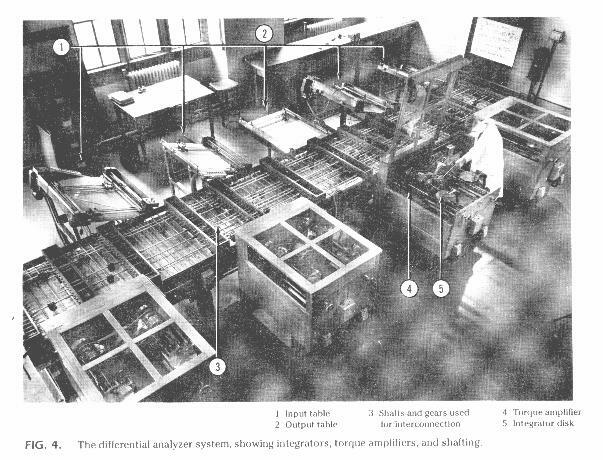
THE DIFFERENTIAL ANALYZER
A Brief History of Computers
1900-1950
In 1930, Dr. Vannevar Bush built the first general-purpose analog computer, the differential analyzer, to solve differential equations. It was hand-operated and had no electrical parts. The differential analyzer was used in World War II to aim guns.

THE DIFFERENTIAL ANALYZER
Claude Shannon, a student at Massachusetts Institute of Technology (MIT), described the similarity between symbolic logic and switching circuits. In 1936, he coined the term bit from binary digit. A bit is the smallest particle of computer information

CLAUDE SHANNON
In 1937, Alan Turing, a mathematician, came up with the concept of a "Universal Machine" or "The Turing Machine". It would be capable of executing any clearly defined problem and was based on zeros and ones.
This idea became the definition of "computability" and is the basis of all digital computers in use today.
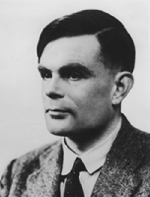
ALAN TURING
In 1937, Howard Aiken, of Harvard University, proposed the MARK 1, the first electromechanical calculator. It took seven years to complete. Aiken's calculator was made from parts of seventy-eight accounting machines and desk calculators controlled by a roll of punched paper. It weighed five tons, had five hundred miles of wire, and filled a fifty-by-thirty-foot room. It was able to multiply a twenty-three digit number in a third of a second. After fifteen years of use, solving gunning, ballistics, and naval design problems, the Mark I was retired.

THE MARK 1 COMPUTER
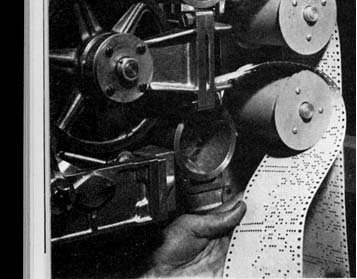

PUNCHED PAPER USED FOR STORAGE IN
THE MARK I COMPUTER
In 1947, engineers working on the Mark II computer at Harvard University found a moth stuck in one of the components. They taped the insect in their logbook and labeled it "first actual case of bug being found."
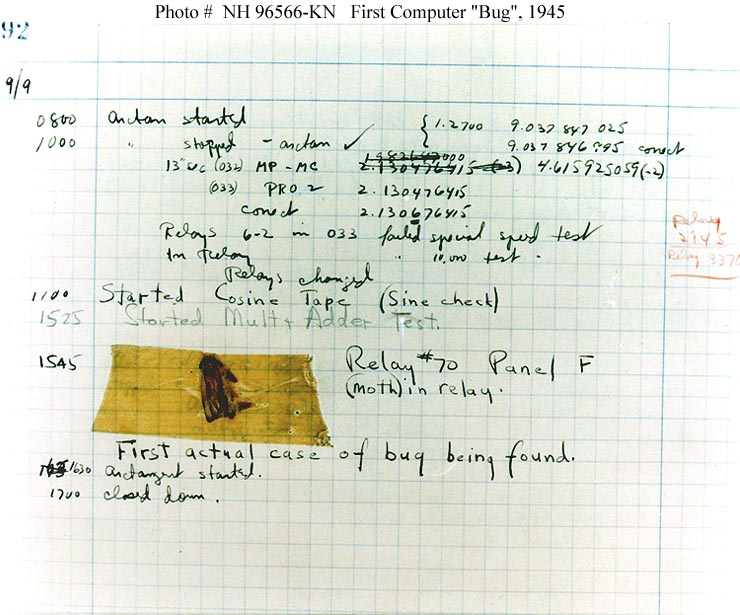
THE FIRST "COMPUTER BUG"
John Vincent Atanasoff with John Berry created a machine now called the ABC or the Atanasoff-Berry Computer. It is really the earliest example of an electronic calculator. However, the ABC developed concepts that would be essential in later computers: the arithmetic unit and cyclical, regenerative memory.

THE ATANASOFF-BERRY COMPUTER
The United States Army designed the first electronic computer to determine the paths of bombs and bullets shot from planes during World War II. ENIAC (Electronic Numerical Integrator and Computer) was completed in 1946, after the war was over, at the University of Pennsylvania by Mauchly, Eckert, and Brainerd. It contained eighteen thousand vacuum tubes, seventy thousand transistors, ten thousand capacitors, six thousand switches, and weighed thirty-five tons. It took up three to four times more space than the Mark 1. Programs were stored on large boards, so there was a delay each time a program was changed.
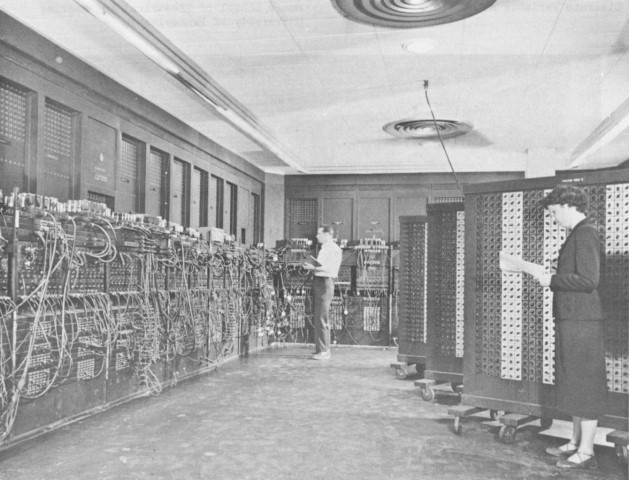
THE ENIAC COMPUTER
At first, ENIAC could run for only seven or eight minutes before a vacuum tube failed and needed to be replaced. It performed one thousand additions per second and was three hundred times faster than the Mark 1.
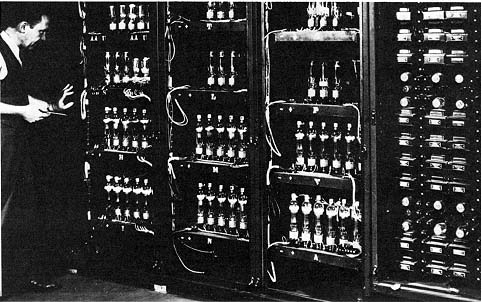
VACUUM TUBES USED IN THE ENIAC COMPUTER
From 1947 until 1955, ENIAC made weather predictions, cosmic ray studies, atomic energy calculations, and assisted in the 1950 census. It was retired in 1955 to the Smithsonian Institution in Washington, D.C.
The war had begun and the US government needed machines that would effectively decrypt intercepted enemy messages. A team of researchers in Bletchley Park (in England) began to work on a series of machines that ended in 1943 with the Colossus. The Colossus was to decode German messages coming from the German computer called the Enigma.
The Colossus became operational in 1944.
Immediately, it began decrypting messages and planning for
D-Day which was later that year. It was
the first electronic programmable computer which could decode
messages within hours of receiving them.
The existence of Colossus remained secret
until 1970 and the programming for decryption remains secret
even today. Because its existence
remained unknown until 1970, the Colossus had almost no impact on computing
following the war.

THE COLOSSUS COMPUTER
In 1937, John von Neumann, of Princeton University, began to use machines as electronic brains. He stressed the importance of logic and instructions in programs, or software. He proposed storing programs within the computer's memory. A prototype, the JONIAC, was named for him and built at Princeton.

JOHN VON NEUMANN
The transistor was invented by Shockley, Brattain, and Bardeen in 1948.
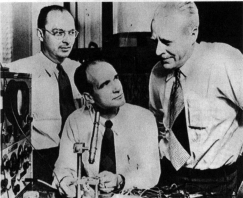
INVENTORS OF THE TRANSISTOR
At MIT in 1949, Jay Wright Forrester invented the magnetic core memory. The Whirlwind 1, completed in 1951, was the first computer to use it.
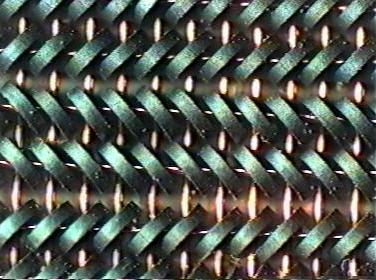

MAGNETIC CORE MEMORY CORE
MEMORY STORAGE MODULE

WHIRLWIND I